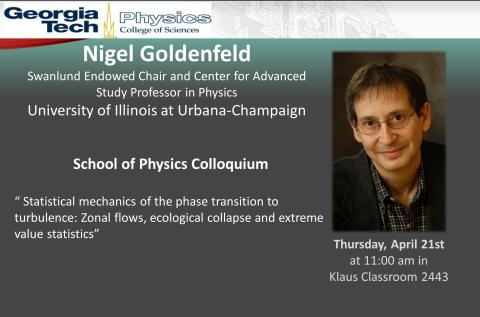event
Statistical mechanics of the phrase transition to turbulence: Zonal flows, ecological collapse and extreme value statistics
Primary tabs
Abstract:
How do fluids become turbulent as their flow velocity is increased? In recent years, careful experiments in pipes and Taylor-Couette systems have revealed that the lifetime of transient turbulent regions in a fluid appears to diverge with flow velocity just before the onset of turbulence, faster than any power law or exponential function. I show how this superexponential scaling of the turbulent lifetime in pipe flow is related to extreme value statistics, which I show is a manifestation of a mapping between transitional turbulence and the statistical mechanics model of directed percolation. This mapping itself arises from a further surprising and remarkable connection: laminar and turbulent regions in a fluid behave as a predator-prey ecosystem. Such ecosystems are governed by individual fluctuations in the population and being naturally quantized, are solvable by path integral techniques from field theory. I explain the evidence for this mapping, and propose how a unified picture of the transition to turbulence emerges in systems ranging from turbulent convection to magnetohydrodynamics.
Groups
Status
- Workflow Status:Published
- Created By:Dione Morton
- Created:04/13/2016
- Modified By:Fletcher Moore
- Modified:04/13/2017
Categories
Keywords
Target Audience

